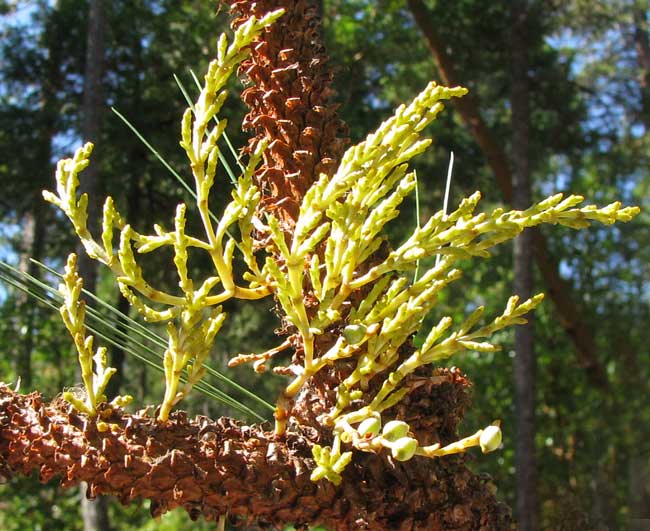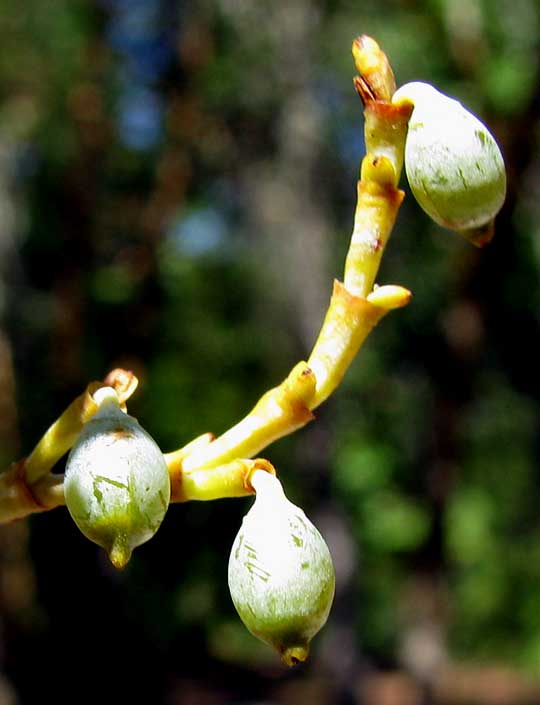Excerpts from Jim Conrad's
Naturalist Newsletter

from the the September 27, 2009 Newsletter, issued from the Siskiyou Mountains west of Grants Pass, Oregon:
DWARF MISTLETOE
Easterners think of mistletoe as a shrublike plant with green leaves growing on trees. It's a member of the genus Phoradendron. In western North America we also have Phoradendrons, plus, in the same family, there's "dwarf mistletoe" of the genus Arceuthobium, of which about a dozen species are listed just for California. You can see one of those on a branch of Ponderosa Pine growing next to my trailer above.
A big difference between our dwarf mistletoe and regular Phoradendron mistletoe is that the dwarves bear no flat, green leaves. In fact, Phoradendron mistletoes are only partly parasitic (they're "hemiparasitic") because they take only water and dissolved nutrients from their hosts while they photosynthesize their carbohydrate food with their own green leaves. In contrast, our dwarf mistletoes are entirely parasitic, bearing no green leaves or green parts at all. A close-up showing three immature fruits about 1/5th-inch long on a typical branch below:

Dwarf mistletoe's mature fruits disperse their seeds by means of explosion; hydrostatic pressure in the ripening fruit builds to such a point that eventually the slightest touch dislodges the fruit from its pedicel and the seed is shot from an opening in the fruit at a velocity of 89 feet per second!
When you "key out" a species of dwarf mistletoe in California's Jepson Manual, very little reference is made to the unknown plant's anatomical features. Instead, species identification is based mostly on the host tree's identity. The individual in the picture is on a Ponderosa Pine so it must be the Western Dwarf Mistletoe, ARCEUTHOBIUM CAMPYLOPODUM.
In North America's western forest ecosystems heavy dwarf mistletoe parasitization can result in reduced tree growth, premature tree mortality, reduced seed and cone development, reduced wood quality, and an increase in susceptibility to diseases and insect attack. Most commercially important conifers in western North America are parasitized by one or more dwarf mistletoe species.